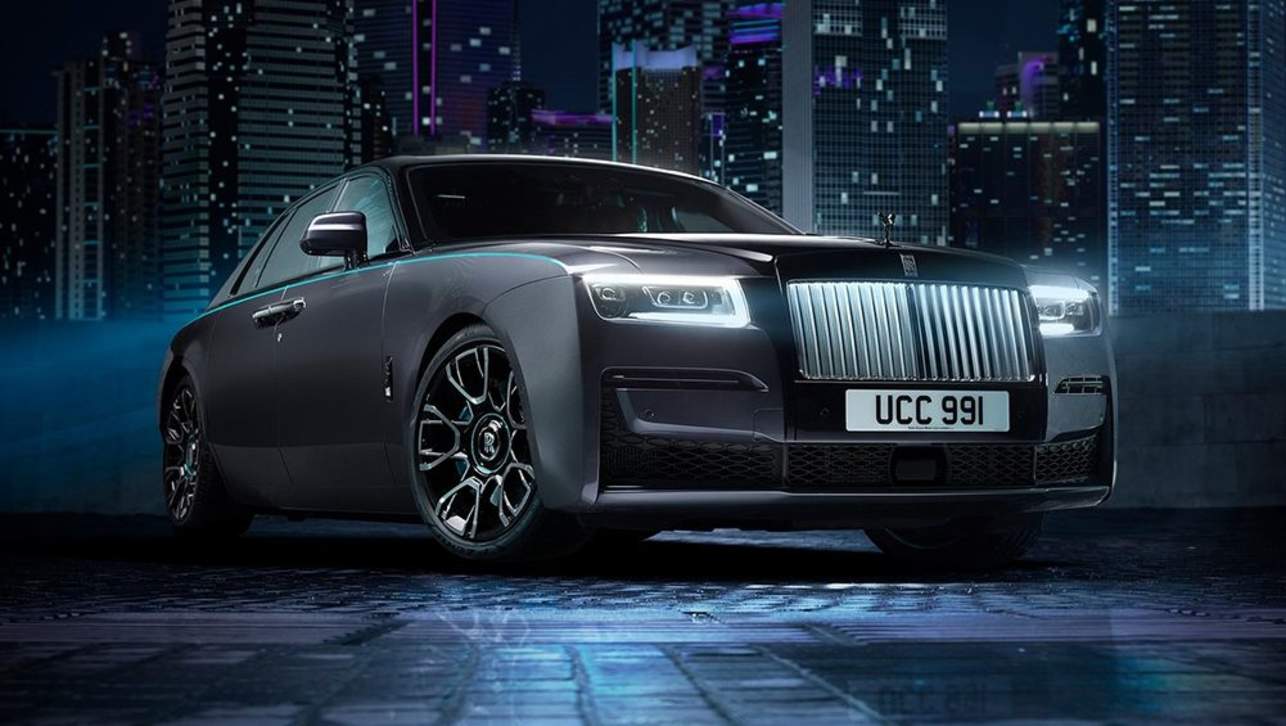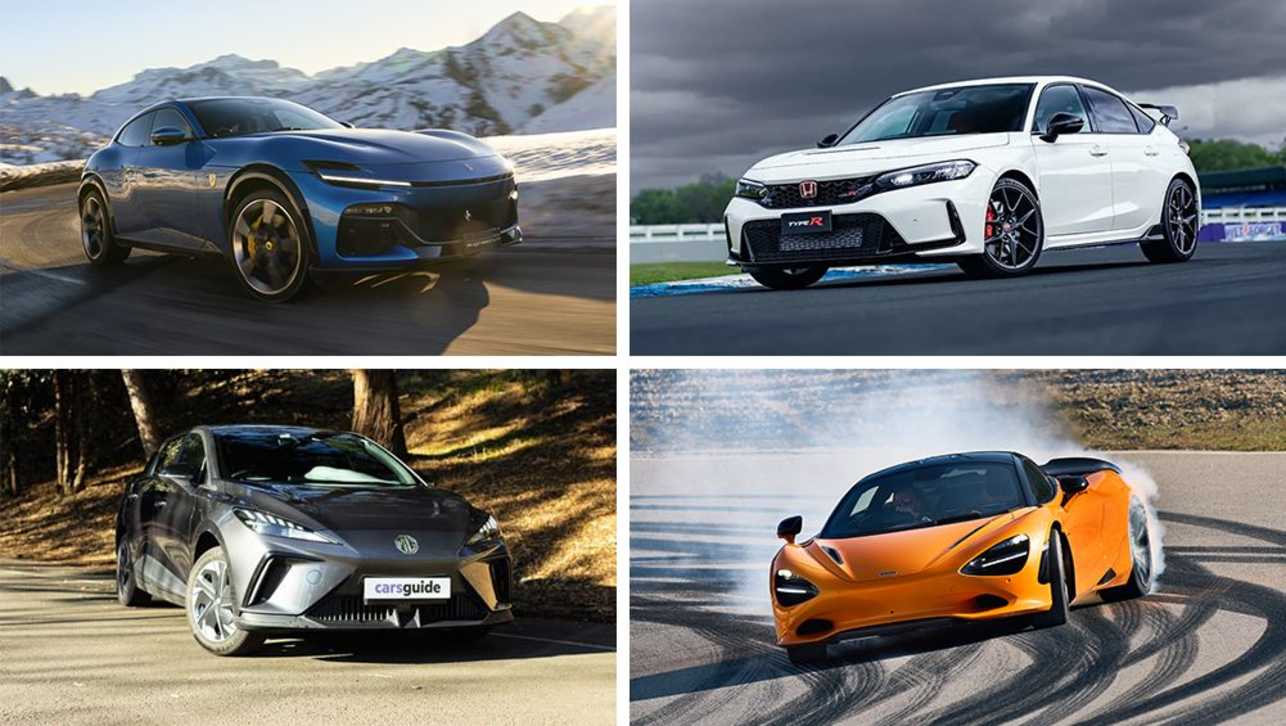ThrustSSC is officially the fastest car in the world hitting a staggering 1227km/h in the Black Rock Desert, USA back in October 1997.
In doing so it became the first car to break the speed of sound and even 26 years later no-one has ever got close to achieving the same speed.
But it’s not a car you can drive to the shops. ThrustSSC was powered by two Rolls-Royce Spey turbofan engines and measured 16.5m long and 3.7m wide, so it isn’t going to fit through the drive-thru lane. And have we mentioned its 120-metre turning circle?
While the ThrustSSC is arguably the world’s fastest vehicle on the ground, it’s a stretch to call it the fastest car ever, at least in terms of how we typically think of a ‘car.’
So, what is the fastest road legal car in the world? The one you can drive to the shops or drop the kids to school in?
We’ve checked the numbers and assembled the list of the fastest road cars you can buy at the time of publication. But before revealing what the fastest street legal car is, here’s a brief history and explainer of how we’ve come up with this list.
.jpg)
What does it mean to be road legal? And why is that important for a car?
For our list we’ve decided to focus on cars that are able to legally drive on the road and ones produced in at least some volume, rather than one-off creations.
That means cars from some of the most famous names in the industry, such as McLaren, Bugatti and Koenigsegg, but also some names you may not be as familiar with, like SSC and Hennessey.
How have the benchmarks for the fastest legal road cars changed throughout history? What is considered fast today?
The first car had a top speed of just 19km/h, which isn’t very fast by today’s standards, but it didn’t take long for speeds to rise. One of the first cars to make an impact for its top speed was the 1949 Jaguar XK120.
The British brand’s stylish coupe could reach 200km/h, making it the fastest production car in the world at the time.
By 1955 Mercedes-Benz raised that figure to 242km/h with its 300SL and a decade later the benchmark had been raised to 266km/h by the AC Cobra Mk III with its 7.0-litre V8.
.jpg)
By the early 1980s the Lamborghini Countach had reached 293km/h and then in 1986 the Porsche 959 became the first factory-produced road legal car to break the 300km/h barrier, with a run to 319km/h.
The low-volume Porsche-tuning specialists, Ruf, built the 305km/h Ruf BTR in ‘83 but built less than 30 examples of the car, and the same is true of the 342km/h capable 1987 Ruf CTR.
In 1993 the Dauer 962 Le Mans was tested and reached 404km/h, reaching the next milestone mark, but for those unfamiliar, the Dauer was actually a thinly-disguised version of Porsche 962 prototype racing machine, and this is a list of true road-legal production cars, not the ‘fastest race car disguised as a road car’ - so it doesn’t make the cut.
.jpg)
Instead, the honour of the first legitimate vehicle that can lay claim to being the first road legal car to break the 400km/h barrier belongs to the 2005 Bugatti Veyron.
However, since then it has seemingly kicked off a race beyond the 400km/h mark, which is the barrier to entry for our top 10 list, read on to find out which car is #1 and the fastest car ever made that can grace the road.
The bragging rights that come with making the world’s fastest car means several brands have made bold claims in recent years, but all the cars on our list have been recorded achieving the speed we’ve credited them with in real-world testing.
10. 2023 Koenigsegg Regera - 402km/h
.jpg)
Think of Swedish carmakers and you probably think of Volvo and Saab. But in the past two decades another name has emerged on the world stage - Koenigsegg.
Founded in 1994 by Christian von Koenigsegg and headquartered at a former Swedish Air Force base, the company quickly earned a reputation for making striking and very, very fast cars.
The Regera - which means ‘to reign’ in Swedish - was designed as a plug-in hybrid hypercar. It combines a twin-turbo 5.0-litre V8 internal combustion engine with three electric motors to produce 1119kW of power.
This helps the Regera hit its top speed of 402km/h, but just as impressively, the Regera can launch 0-100km/h in just 2.8 seconds and takes just 20 seconds to reach 400km/h.
This acceleration is thanks to Koenigsegg’s radical direct-drive powertrain, which uses the electric motor at low speeds and for initial acceleration, thereby reducing turbo lag and allowing for the rapid acceleration and high top speed.
9. 2020 McLaren Speedtail - 402km/h
.jpg)
The McLaren F1 claimed the title of the world’s fastest production car in the early 1990s, hitting 386km/h. The British supercar brand never intended to get caught up in the ‘fastest car’ debate but the V12-powered F1 was just very quick.
Fast forward to modern day and the company released the Speedtail in 2020, a car it labels a ‘Hyper-GT’ and hails as its “most aerodynamically efficient hypercar ever” - and certainly one of the most remarkable looking.
The sleek and long body helps it cut through the air and its 786kW/1150Nm petrol-electric powertrain allowed it reach its targeted top speed of 402km/h (250mph).
And to prove it was no fluke, McLaren had its test driver complete 30 high speed runs at the Kennedy Space Centre in Florida, USA back in 2020.
The space centre features a 5.0km long runway for space shuttles, which makes it a popular destination for cars on this list as safe stretches of road to drive 400km/h and beyond are few and far between.
8. 2005 Bugatti Veyron - 407km/h
.jpg)
As mentioned earlier, this was the car that set off the modern speed race between these hypercar brands. Ettore Bugatti was an early speed merchant, building a successful line of road and racing cars, but the company’s fortunes ebbed and flowed over the years.
It wasn’t until Volkswagen Group bought the brand in 1998 that it became a true hypercar maker. Seeking to compete at the very top of the performance car market, Volkswagen empowered Bugatti to make the fastest road legal car in the world and the result was the Veyron.
Launching in 2005 the goal of the Veyron was clear - be the fastest and most luxurious car in the world. To achieve that Bugatti’s engineers created a staggering 8.0-litre W16 engine with four turbochargers, punching out an astonishing 736kW in its original guise.
In order to be safe at such a high speed Bugatti’s designers created three separate aerodynamic settings for the car, with one specifically designed for speeds over 375km/h.
To access this mode you needed to turn a physical key in the car before starting, which then engages the most extreme aero settings for safe high speed running.
While this is the first Bugatti entry on our list, it isn’t the last…
7. 2007 SSC Ultimate Aero TT - 412km/h
.jpg)
Unless you’re a hypercar fanatic you’ve probably never heard of SSC. But the company formerly known as the Shelby Supercar Company (no relation to Carrol Shelby’s famous brand, hence the change to the acronym) is earning a reputation for very fast cars.
Back in 2007 it built the Ultimate Aero, which looks a lot like a typical non-descript hypercar-by-numbers, but was a very effective machine.
It helped that it was powered by a Chevrolet V8 from the Corvette C5.R with two turbochargers added to boost power to a healthy 820kW (1100hp).
This allowed it to rocket to a Guinness Book of Records-certified 412km/h, knocking the Bugatti Veyron off top spot and earning SSC a place amongst more recognisable carmakers.
Making the record even more remarkable was the 71-year old test driver and the fact that the stretch of road used for the record run featured a bend in it that the driver had to navigate at 330km/h.
And the company wasn’t done, as you’ll see…
6. 2022 Rimac Nevera - 415km/h
.jpg)
Who says hypercars have to have big, high-powered, multi-turbo petrol engines? Not Mate Rimac, the Croatian engineer who started his namesake company to build all-electric supercars.
The result is the Rimac Nevera, a compact hypercar powered by four electric motors producing a total of 1427kW of power (or 1914hp if you prefer) and paired with a 120kWh battery pack.
That helps it to its top speed of 412km/h and, as you’d expect from an EV, a very, very rapid 0-100km/h time of less than 2.0 seconds.
Only 150 examples of the Nevera are set to be built, but expect more to come from Rimac. Its technology has drawn investment from across the industry, so much so that it has merged with Bugatti and Porsche to create the Rimac Group under the Volkswagen Group umbrella.
So this could only be the start of a line of boundary-pushing electric hypercars.
5. 2010 Bugatti Veyron Super Sport - 431km/h
.jpg)
What do you do when you’ve built the world’s fastest car (only to see it knocked off by a small American upstart)? Make it even faster, obviously.
The Veyron Super Sport was a strictly limited (and very expensive) run of just 48 cars that elevated the performance of the W16 to 882kW/1500Nm and tweaked the aerodynamics.
Test driver Pierre-Henri Raphanel hit 431km/h on Volkswagen’s Ehra-Lessien test track to reclaim the title of the world’s fastest production car.
Although, it must be pointed out that the lucky 48 customers were limited to ‘only’ 415km/h thanks to an electronic speed limit, because Bugatti was worried about how long the tyres would last at 430km/h.
4. 2014 Hennessey Venom GT - 435km/h
.jpg)
Like SSC, Hennessey is another smaller company competing with the more memorable names in this contest of speed.
The company made its reputation modifying American cars from a variety of brands, including Chevrolet, Dodge and Ford.
In 2010 they took things to the next level when they took a Lotus Exige, ditched the Toyota V6 and installed a twin-turbo V8 to create the Hennessey Venom GT. The compact supercar was packing 928kW and that helped it hit 435km/h at the Kennedy Space Centre.
Some will argue the Hennessey record shouldn’t count because it was only run in one direction, not each way to account for wind assistance, and only 13 examples were believed to be built. But video evidence shows the Venom GT hitting 270mph and that’s good enough for this list.
Hennessey may want to make it official, though, it’s working on a successor to the GT, the Venom F5. The company revealed it back in 2017 with the stated goal of reaching 300mph (482km/h) but there is yet to be a public test to validate that claim.
3. 2017 Koenigsegg Agera RS - 445km/h
.jpg)
If you’re a law-abiding citizen the fastest you’ve ever driven on the road is 110km/h. Now imagine going more than four times quicker.
That’s what Koenigsegg test driver Niklas Lilja did in 2017, setting a new record on a stretch of US Highway 160 in the Nevada desert.
It was all perfectly legal and officially organised but the idea of hitting a top speed of 457km/h (which was recorded as 445km/h based on the average of his run in each direction) is frightening.
In keeping with Koenigsegg’s template for creative and extremely powerful cars, the Agera RS was motivated by a 1000kW twin-turbo V8 engine and featured a specially developed lightweight body to enhance its power-to-weight ratio.
At the time of publication Koenigsegg had set its next goal - 500km/h. Or, actually, 530km/h (330mph) which it hopes to achieve with its latest model, the Jesko Absolut.
2. 2021 SSC Tuatara - 455km/h
.jpg)
Having shocked the world in 2007, SSC has been able to develop an all-new hypercar that almost reclaimed the record for the fastest production car.
The new model is named after a New Zealand reptile and styled by Jason Castriota, the American who penned the Ferrari 599 GTB, Maserati GranTurismo and, most recently the Ford Mustang Mach-E.
Underneath his carefully crafted carbon-fibre exterior is a twin-turbo V8 (a popular choice on this list) that makes up to 1300kW on road legal fuel (and 1650kW on racing-grade methanol).
Originally the company claimed the Tuatara had a top speed of 300mph (482km/h) but then released a video showing it seemingly hitting 532km/h on the same stretch of highway Koenigsegg used for the Agera RS run.
However, the video was questioned online and SSC quickly organised another run at the Kennedy Space Centre runway in early 2021.
This time the car recorded a two-way average of 455km/h, which is well short of the original claim but still good enough for second on this list.
Obviously everyone wants to be first, but Buzz Aldrin still had a good time walking on the moon, so second isn’t always so bad.
1. 2019 Bugatti Chiron Super Sport 300+ - 490km/h
.jpg)
It probably isn’t surprising this list is topped by a Bugatti.
Since the brand’s revival under Volkswagen it has seemingly made producing the fastest road legal car its priority.
Anytime it has been challenged it has responded and after Koenisegg and then Hennessey knocked off the Veyron, it was inevitable the French-German brand would respond.
And the response was truly impressive.
.jpg)
The Chiron was the successor to the Veyron, which originally launched in 2016 with an evolution of the now-famous 8.0-litre W16 engine making 1103kW/1600Nm.
However, by 2019 Bugatti had developed the Chiron Super Sport 300+, a run of just 30 ultra-high-performance hypercars.
These made 1175kW and had a modified transmission with longer gear ratios and redesigned aerodynamics for a higher top speed.
In 2019 the brand’s test driver, Andy Wallace, strapped in and kept his foot down until he reached a mind-blowing 490km/h (304.7mph) to reclaim the title of the world’s fastest production car.
.jpg)
So extreme are the speeds being reached that Bugatti limited the customer examples of the Chiron Super Sport to 440km/h and provided special driver training to ensure each owner was safe behind the wheel.
In order to hit this staggering speed Bugatti went so far as to x-ray each tyre to ensure it was structurally safe for the top speed run.
And Bugatti isn’t done, setting a target of 500km/h for its upcoming Bolide model. However, this is a track-only car and therefore cannot be classified as a ‘road legal car’, even if 500km/h is an astonishing achievement for something based on a production car.




.jpg)

.jpg)
.jpg)
 copy.jpg)
.jpg)
_0.jpg)
.jpg)
.jpg)
.jpg)




.jpg)








.jpg)
Comments